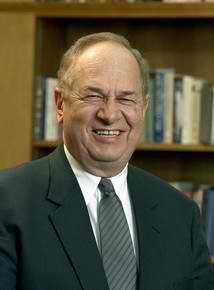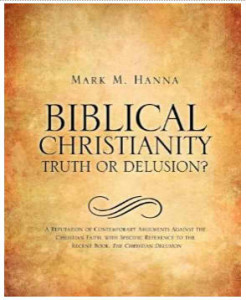
Former President of Gordon-Conwell Theological Seminary
on the Licona Issue
More About Dr. Kaiser here
and here
|
Dr. Walter Kaiser, Jr. is one of the foremost evangelical biblical scholars of our times. He has written numerous books on this and related topics. In our opinion, his view has the utmost authority on this topic. –N. L. Geisler |
|
|
|
|
|
A survey was distributed to a few defenders of biblical inerrancy to see who might agree that various statements in Dr. Mike Licona’s book The Resurrection of Jesus are inconsistent with the doctrine of inerrancy as expressed by the ICBI. The survey and Dr. Kaiser’s response may be viewed below. |
|
|
A Petition on Mike Licona’s View |
|
|
|
|
Mike Licona’s Statements (in The Resurrection of Jesus):
“There is somewhat of a consensus among contemporary scholars that the Gospels belong to the genre of Greco-Roman biography (bios). Bioioffered the ancient biographer great flexibility for rearranging material andinventing speeches…and they often included legend. Because bios was a flexible genre, it is often difficult to determine where history ends and legend begins” (34, emphasis added in this and following citations).
“For this reason, we get a sense that the canonical Gospels are reading authentic reports of Jesus’ arrest and death…even if some embellishments are present” (306).
“A possible candidate for embellishment is Jn 18:4-6” (306, n. 114).
“It can forthrightly be admitted that the data surrounding what happened to Jesus is fragmentary and could possibly be mixed with legend, as Wedderburn notes. We may also be reading poetic language of legend at certain points, such as Matthew’s report of the raising of some dead saints at Jesus’ death (Mt 27:51-54) and the angels at the tomb (Mk 16:5-7; Mt 28:2-7; Lk 24:4-7; Jn 20:11-13) (185-186).
There is “…‘a weird residual fragment’ in Matthew (Mt. 27:52-53). If taken literally, there would have been many, perhaps hundreds of empty tombs around Jerusalem on that first Easter” (527-528).
“This strange report in Matthew 27:52-53 attempts to retain the corporate harrowing of hell and the individual preascension appearances. However, ‘the magnificent harrowing of hell is already lost in that fragment’s present redaction’” (530).
“This brings us to that strange little text in Matthew 27:52-53, where upon Jesus’ death the dead saints are raised and walk in the city of Jerusalem…. Raymond E. Brown notes that similar phenomena were reported at the death of Romulus and Julius Caesar…. In a clearly poetic account, Virgil reports that the following sixteen phenomena occurred after Caesar’s death:..” (548).
“…it seems to me that an understanding of the language in Matthew 27:52-53 as ‘special effects’ with eschatological Jewish texts and thought in mind is most plausible…. Matthew may simply be emphasizing that the great king has died. If he had one or more of the Jewish texts in mind, he may be proclaiming the day of the Lord has come” (552).
“It seems best to regard this difficult text in Matthew as a poetic deviceadded to communicate that the Son of God had died and that impending judgment awaited Israel” (553). (Emphasis added in all these quotations.)
Select Inerrancy Statements by ICBI in its “Chicago Statement” (1978)
Article XIII : We affirm the propriety of using inerrancy as a theological term with reference to the complete truthfulness of Scripture. We deny that it is proper to evaluate Scripture according to standards of truth and error that are alien to its usage or purpose.
Article IX: We affirm that inspiration, though not conferring omniscience,guaranteed true and trustworthy utterance on all matters of which the Biblical authors were moved to speak and write. We deny that the finitude or fallenness of these writers, by necessity or otherwise, introduced distortion or falsehood into God’s Word.
Article XII: We affirm that Scripture in its entirety is inerrant, being free from all falsehood, fraud, or deceit. We deny that Biblical infallibility and inerrancy are limited to spiritual, religious, or redemptive themes, exclusive of assertions in the fields of history and science.
Article XIII: We affirm the propriety of using inerrancy as a theological term with reference to the complete truthfulness of Scripture. We deny that it is proper to evaluate Scripture according to standards of truth and error that are alien to its usage or purpose.
Article XVIII: We affirm that the text of Scripture is to be interpreted by grammatico-historical exegesis, taking account of its literary forms and devices, and that Scripture is to interpret Scripture.
We deny the legitimacy of any treatment of the text or quest for sources lying behind it that leads to relativizing, dehistoricizing, or discounting its teaching, or rejecting its claims to authorship.
Selections from the Official ICBI Commentary titled Explaining Inerrancy
Article XII Selections: Though the Bible is indeed redemptive history, it is also redemptive history, and this means that the acts of salvation wrought by God actually occurred in the space-time world.
When we say that the truthfulness of Scripture ought to be evaluated according to its own standards that means that … all the claims of the Bible must correspond with reality, whether that reality is historical, factual or spiritual.
By biblical standards truth and error is meant the view used both in the Bible and in everyday life, viz., a correspondence view of truth. This part of the article is directed toward who would redefine truth to relate merely to redemptive intent, the purely personal, or the like, rather than tomean that which corresponds with reality.
Article XVIII Selection: When the quest for sources produces adehistoricizing of the Bible, a rejection of its teaching or a rejection of the Bible’s own claims of authorship [then] it has trespassed beyond its proper limits.
By biblical standards of truth and error is meant the view used both in the Bible and in everyday life, viz., a correspondence view of truth. This part of the article is directed toward those who would redefine truth to relate merely to redemptive intent, the purely personal, or the like, rather than to mean that which corresponds with reality.
Select Official ICBI statements from Hermeneutics Statement Explaining Hermeneutics (hereafter, EH).
EH Article VI: We further affirm that a statement is true if it represents matters as they actually are, but is an error if it misrepresents the facts.
The commentary adds, “The denial makes it evident that views which redefine error to mean what ‘misleads,’ rather than what is a mistake, must be rejected.”
EH Article XIII: We deny that generic categories [categories of genre]which negate historicity may rightly be imposed on biblical narratives which present themselves as factual.
Some, for instance, take Adam to be a myth, whereas in Scripture he is presented as a real person. Others take Jonah to be an allegory when he is presented as a historical person and [is] so referred to by Christ.
EH Article XIV: We deny that any event, discourse or saying reported in Scripture was invented by the biblical writers or by the traditions they incorporated.
EH Article XXII: It “affirms that Genesis 1-11 is factual, as is the rest of the book.”
The denial makes is evident that views which redefine error to mean what‘misleads,’ rather than what is a mistake, must be rejected.
An Expression of Opinion on Mike Licona’s view on Inerrancy
“We affirm that the view expressed in the above citations from The Resurrection of Jesus:
|
(1) casts doubt on the historicity of parts of the Gospel record (Yes or No); |
|
Yes |
|
(2) is inconsistent with the doctrine of inerrancy as expressed by the framers of the ICBI (International Council on Biblical Inerrancy) in their above statements on inerrancy (Yes or No).” |
|
Yes |
|
|
|
Walter C. Kaiser, Jr. |
If you would like to sign this petition, please begin by opening the document
by clicking the icon below.
(Click here to open this article in rich text format)
In the document, please read tge document, scroll down to the last page (page 5),
highlight YES or NO to the two questions,
type your name in red on the signature line, save the document, and email it to:
Copyright © 2012 NormanGeisler.net – All rights reserved
To see an index of other articles on the “Licona Controvery” please clickhere.





